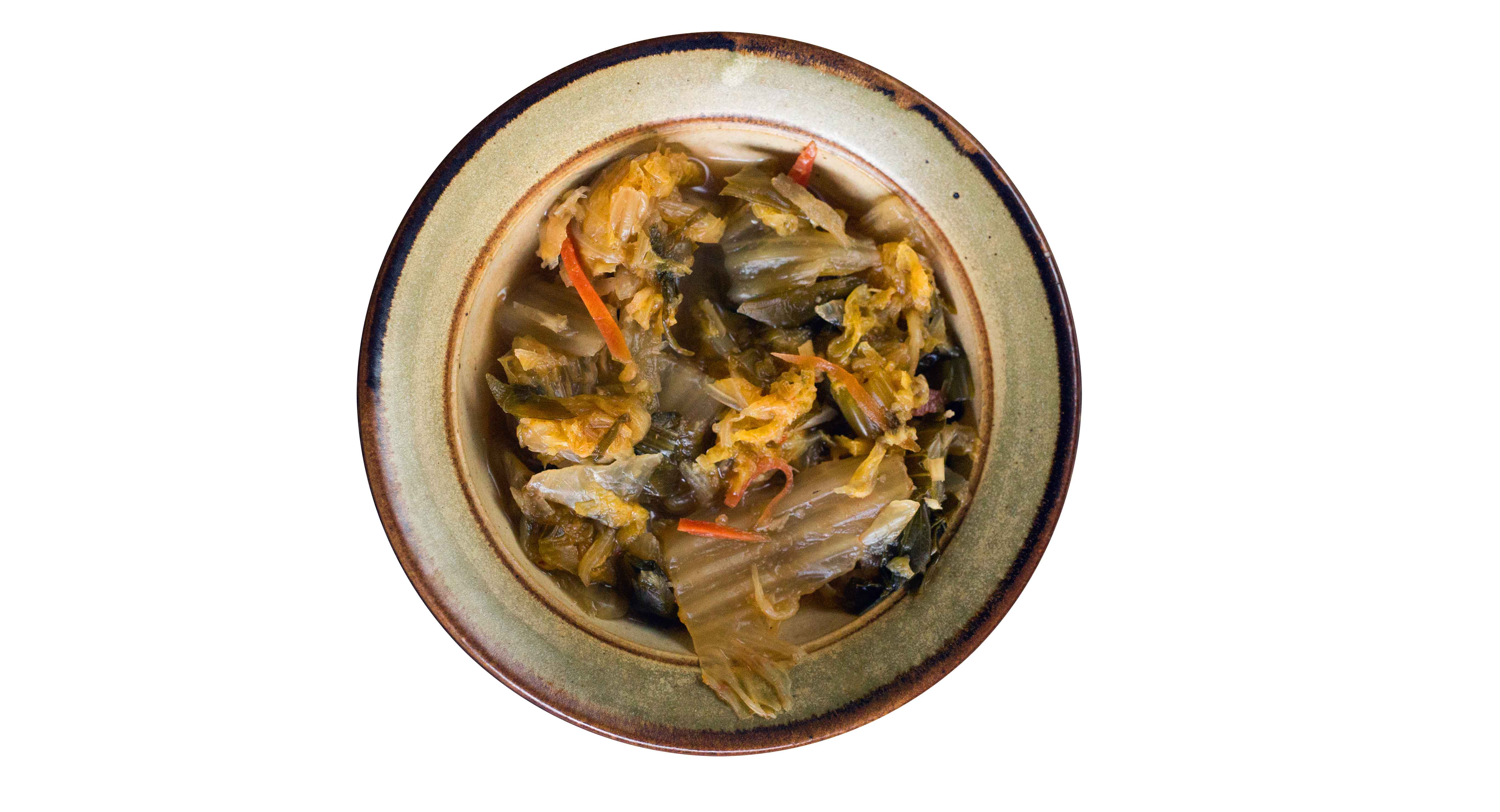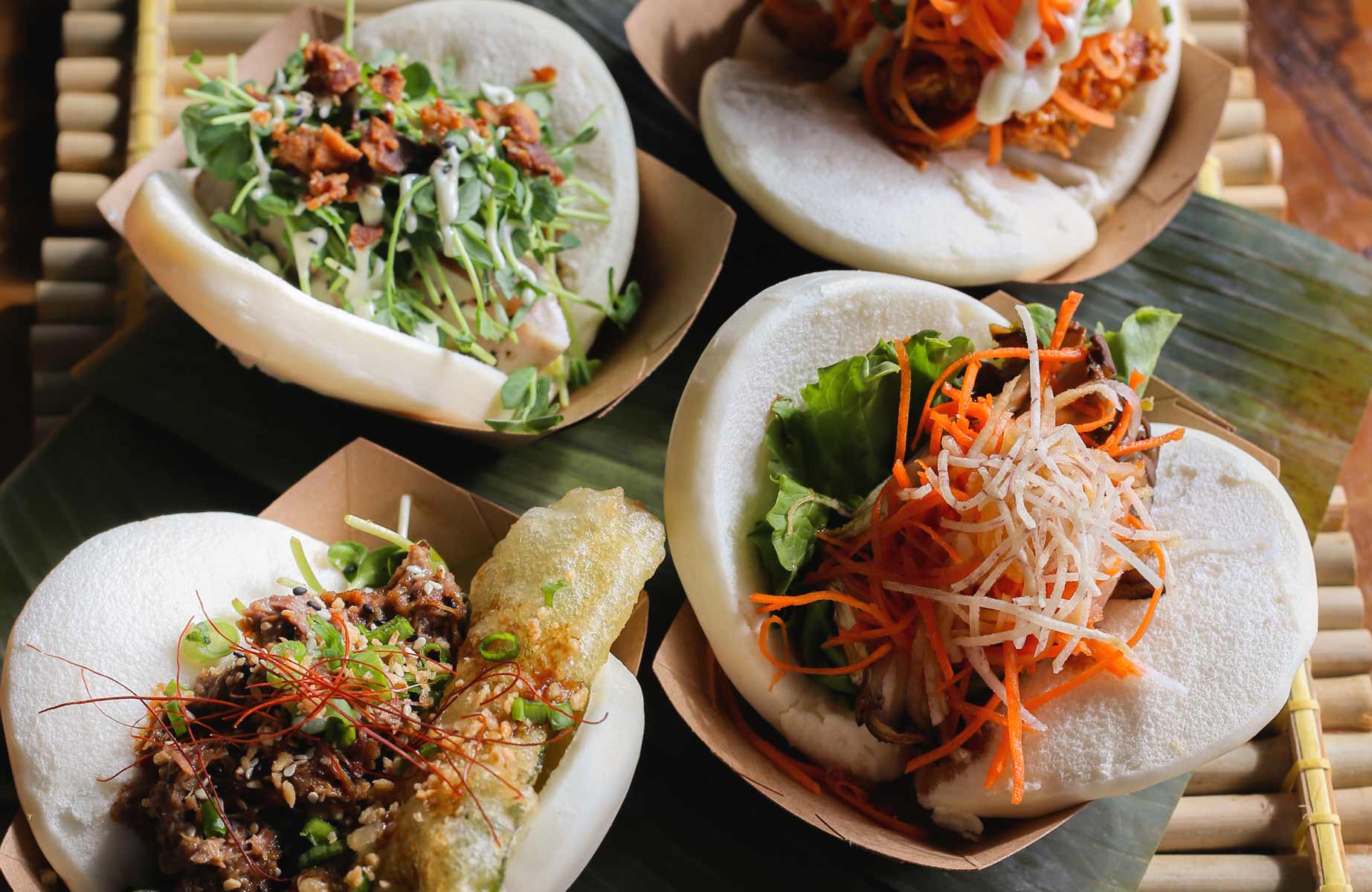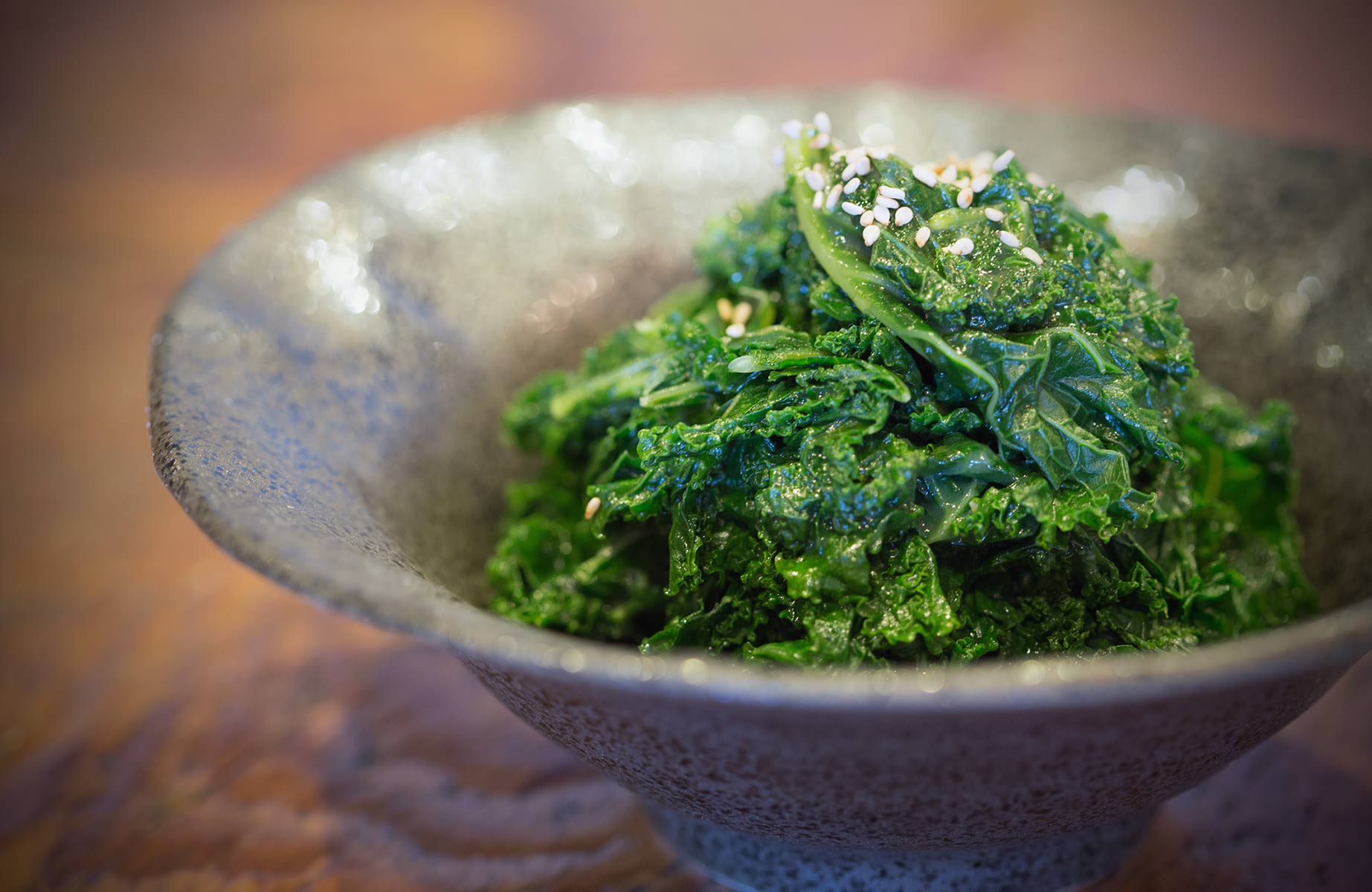Todd Graham teaches fermentation classes and workshops. He also runs a popular monthly secret supper in Vancouver’s Chinatown and weekend pop-up brunches at The Black Lodge restaurant in Mount Pleasant.
If you would like to try your hand at fermentation, we have included Graham’s easy-to-make kimchi recipe. Depending on how this recipe is prepared, it can taste spicy or sour, vinegary or salty—it can even taste soda-like. “Kimchi is an acquired taste,” says Graham, but “when you acquire it, there’s no other taste quite like it.”
Kimchi is a Korean dish that is traditionally made with nappa cabbage, but you can use whatever vegetables are in season. “I’ve pretty much used any vegetable you can get,” says Graham. This versatile ferment is served with most meals in Korea, and is a popular side dish with rice, meat, or fish. You can also use it to make tofu and kimchi soup. To make your kimchi extra delicious, Graham suggests adding snow peas.

Kimchi is meant to be pungent. The longer it stays unrefrigerated, the stronger its scent and flavour. Unless your kimchi tastes foul, it is fine to eat. But if you see mould in your crock or jar, toss that batch out and start again. Kimchi will taste different every time you make it. “Like most fermented things, you’ll know if you don’t like it,” says Graham. “The version of ‘off’ is really questionable in fermentation.”
Kimchi is a great introduction to fermented food: it’s simple, and the end product is versatile and delicious.
Simple Kimchi Ingredients
1 head nappa cabbage
2 carrots
1 radish (daikon)
3 cloves garlic
whites of 5 green onions
3 - 4 hot peppers (dried, powder, or fresh)
1 tablespoon salt
3 tablespoons grated ginger
1 tablespoon fish sauce (optional)
Instructions
Before you get started, make sure your workspace is clean and that your jars are sterilized.
1. Chop cabbage into 5-cm squares.
2. Cut carrots and daikon into 5-cm long matchsticks.
3. Combine the cabbage, daikon, and carrots in a medium-sized bowl. Mix in the salt and let sit for an hour.
4. After the mixture has sat for one hour, use your hands to press down on the vegetable mixture and drain any liquid into a small bowl (set liquid aside and save for later).
5. Blend garlic, green onion, ginger, and hot peppers into a paste using a blender or food processor (you can also mix them by hand).
6. Add the spice mixture to the vegetables and mix everything together until evenly covered.
7. Pack the mixture tightly into a large crock or jar.
8. Once the mixture is in the crock or jar, press down on the mixture again (if needed, add saved liquid to cover the vegetables entirely).
9. Weigh down the mixture. You can do this by placing a sandwich bag filled with water in each crock or jar, or by placing a smaller jar inside each jar you are using.
10. Cover with a clean cloth.
11. Place somewhere cool and dark and let sit for at least five days.
12. Once your kimchi is to your liking, cover it with a lid and store it in the refrigerator. It is a matter of personal preference whether or not to drain the liquid.
To find out more about Graham’s projects, follow Handtaste Ferments on Facebook and Instagram.











